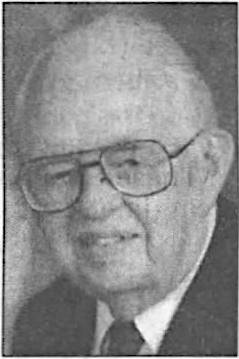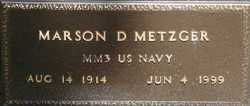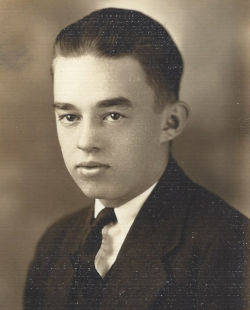Marson D. Metzger
Sioux Falls, SD
1934, 2758, Ft. Meade/Fechner, D-Army-1,
I graduated from high school in 1933 and by 1934 hadn't found a job except odds and ends--like delivering grocery ads and part time hod carrier for a cement man. The pay was 17 1/2 cents an hour.
I joined the CCC and was sent to Fort Meade along with about 199 other fellows. Our camp wasn't built yet, so we slept at the Fort the first nights. I volunteered for a job with 11 other boys to dig a ditch. My new shoes that cost $7.50 were ruined the first day.
After a few days, we were taken to our campsite. The only things there were army trucks loaded with lumber and tents. We were put in groups and each group built platforms for floors and put up the tents. The latrine was a log over a ditch with a canvas for a wall to keep it from the view of the camp. That was home for several weeks. In the meantime, we built our barracks under the supervision of the army from Fort Meade. We appreciated our new barracks and modern latrine, especially after a few times of pushing snow off of the tent and the log over the ditch.
I had played the trumpet in the Sioux Falls municipal band, so they made me camp bugler. I was paid 11 silver dollars a month for getting up extra early to wake the camp with reveille. I also called them for chow, mail, pay and night taps. I still remember those notes from taps echoing in the hills.
During the day, I was assigned to help the camp electrician and learned many good points about electricity.
On weekends, we had the opportunity to visit other camps and to see many places in the Black Hills. There are two things I'll always remember and tell to my grandchildren. The first was at Mount Rushmore. We walked up the steps to the head of Washington. A man was hanging from ropes and chipping rock with an air hammer. After reaching the top our group lined up to shake hands with Gutzon Borglum, the man who carved Mount Rushmore. Washington was the only carving being worked on at that time.

The second was the time we sat on the bank of the stratosphere bowl all night to watch the stratosphere balloon take off in the early morning. It took off and sailed right over our heads. It was a beautiful sight.
As I look back some 52 years, the CCC was a great thing for us and for our country. It would be a good experience for today's unemployed youth.x

Marson D. Metzger, 84, died Friday, June 4, 1999, at McKennan Hospital of natural causes.
He was born August 14, 1914, at Hawarden, Iowa. He graduated from Washington High School in 1933. He then joined the Civil Conservation Corps, serving there until he began work at John Morrell & Co. in 1935. He worked at Morrell's for the next 42 years, except for 1944 to 1946 when he served in the U.S. Navy. He married C. Marie Nicolay on Sept. 16, 1940, at Sioux Falls. He retired from Morrell's in 1977.
He was a member of St. Joseph Cathedral and Morrell Retirees.
xDerschied, Lyle A. "The Civilian Conservation Corps in South Dakota, 1933-1942." Brookings, SD, South Dakota State University Foundation Press, 1986. No longer in print. Available at some libraries but may not be checked-out.
Do you have additional information about Marson Metzger
We would like to included it. Please write or email us at History "at" SouthDakotaCCC "dot" org.







